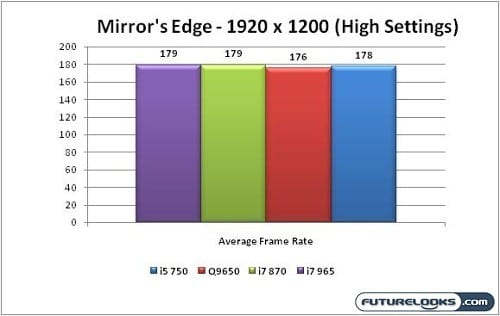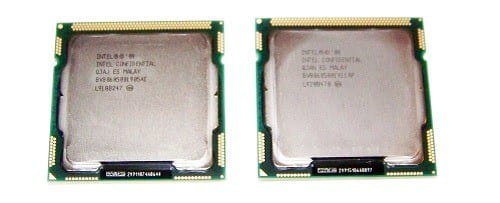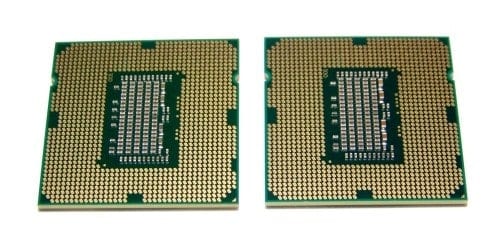Mirror’s Edge
Here we have a little physics and a lot of special lighting being rendered. I was hoping that it would give the system something to work with, but as you can see, it’s business as usual.

Do you see anything unusual in the benchmarks? No? Well, that’s precisely the point. Until some new game titles get released that truly utilize multi-core processors, there will continue to be very little frame rate differences in most every game currently available.
Until then, things will continue relying very, very heavily on graphics cards and their insultingly incremental increases these last couple years.
Doing The Overclocking Dance
The DP55KG Extreme Motherboard didn’t quite take the Lynnfield to its best overclocked frequency. The DP55KG was a little stubborn in the 4 GHz neighborhood. A little help from other boards that we’ll be bringing to you soon, were a bit more nimble and made for quite a number of successes once in the BIOS.
With a bit of voltage, our particular INTEL Core i7 870 hit just around 4.2 GHz without getting crazy. With a little more time, I should be able to find out just how far past the 200 MHz Bus Clock the system can reach especially now that I’ve come across some substantial water cooling thanks to Koolance. We’ll be looking for the ceiling in short order.
Final Thoughts on INTEL’s Lynnfield
If there were any doubts or initial skepticism of Lynnfield’s performance, clearly those doubts are erased today!
Both Hyper and non-Hyperthreaded versions of Lynnfield are super strong performers when it comes to task intensive PC operations. By now, you should know that memory bandwidth benefits things like 3D rendering, compiling, and encoding. Otherwise, standard home and office users won’t notice a change in their common tasks. For the average user out there, it’s complete overkill. However, with INTEL’s aggressive pricing on the new Lynnfield cores, it’s an affordable overkill!
Gamers and especially enthusiasts on a budget love getting their money’s worth. Since Lynnfield requires only dual channel memory, you’ll be saving more money over triple channel. And, that doesn’t take in to account the more affordable P55 SLI and CrossfireX motherboards hitting the shelves as you read this. All that extra money saved means you can spend more on a beefier video card, or two.
Every Lynnfield processor currently available offer a superb performance-cost benefit. The Core i5 750, while still offering four very capable cores, has the avid budget user covered at around $196 USD.

Both the Lynnfield Core i7 860 ($284) and 870 ($562) offer performance practically matching that of the Bloomfield processors yet cost considerably less. For this reason, it’s undoubtedly going to be the popular choice among every range of PC user.
Pros
- CPU: Excellent price/performance ratio
- Motherboards: P55 offers an affordable new choice
- Smaller CPU footprint with lower power consumption
- Less expensive dual channel memory
- Tuned for Windows 7
Cons
- Fashionably late to the party
- New socket requires new motherboard
Overall Rating: 9.5 / 10.0

What Are Your Thoughts on Lynnfield? Sound Off in Our Forums!

